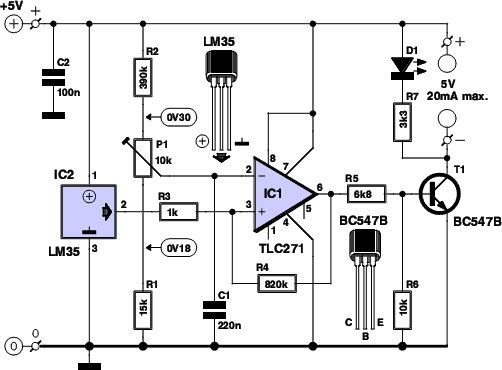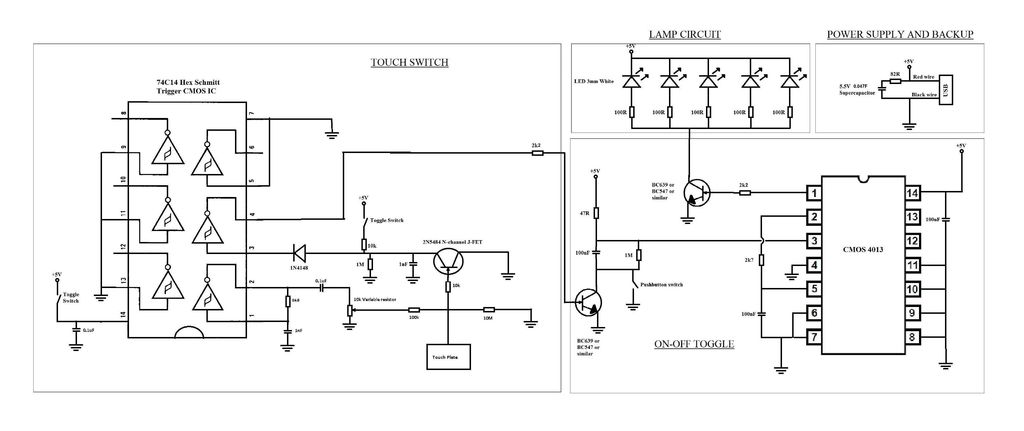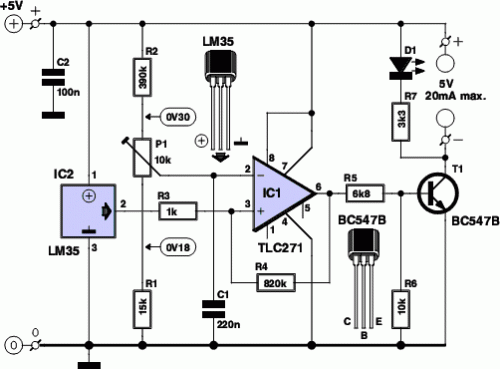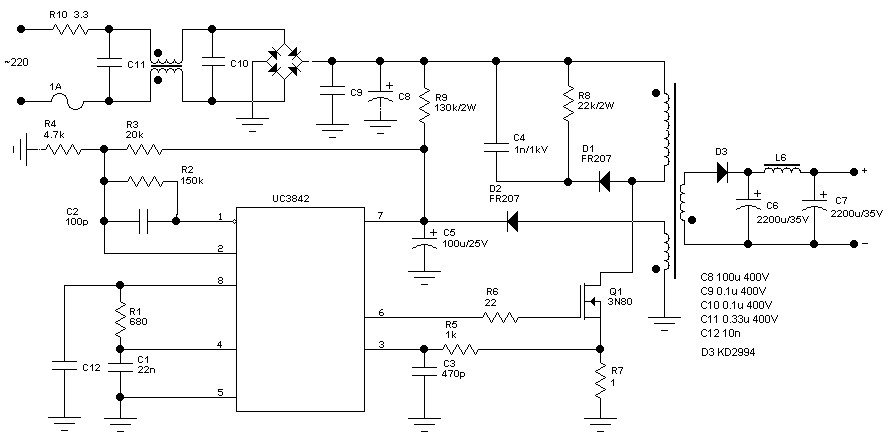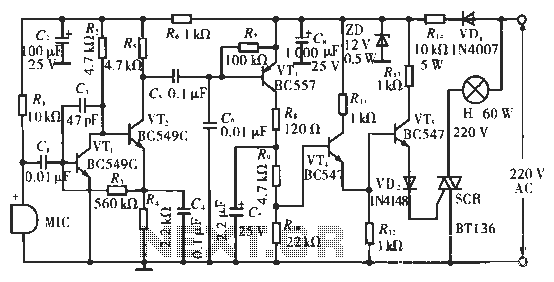
Over-Temperature Switch
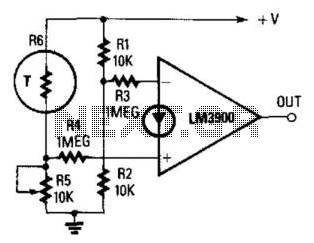
The output becomes high when a predetermined temperature is surpassed. A fixed half-supply reference voltage provides a reference current to the inverting input, while a variable current is supplied to the non-inverting input. Resistor R6 functions as a negative-temperature-coefficient (NTC) thermistor, causing the voltage at the junction of R5 and R6 to increase with temperature. The operational amplifier will switch to a high state when this voltage exceeds the half-supply level. The trip temperature can be adjusted using resistor R5.
The described circuit utilizes an operational amplifier (op-amp) in a temperature sensing application. The core functionality hinges on the relationship between the temperature and the voltage across the NTC thermistor (R6). As the temperature rises, the resistance of the NTC thermistor decreases, resulting in an increase in the voltage at the junction of R5 and R6. This junction voltage is critical as it is compared against a fixed reference voltage derived from the half-supply voltage.
The op-amp is configured in a comparator mode, where the inverting input receives a constant reference current that establishes a stable reference point. The non-inverting input, connected to the junction of R5 and R6, receives a variable current that changes with temperature variations. When the voltage at the non-inverting input exceeds the reference voltage at the inverting input, the output of the op-amp transitions to a high state.
The trip temperature, which determines when the output will switch high, can be finely tuned by adjusting the value of resistor R5. This design allows for flexibility in setting the desired temperature threshold for activation. The overall circuit can be applied in various temperature monitoring and control systems, where precise temperature detection is crucial. Additionally, the incorporation of an NTC thermistor provides a cost-effective and reliable means of temperature sensing.
In summary, this circuit exemplifies a simple yet effective method of temperature measurement and control using an op-amp and an NTC thermistor, with adjustable parameters for tailored applications. The output goes high when a preset temperature is exceeded. A fixed half-supply reference voltage feeds a reference current to the inverting input, and a variable current is fed to the noninverting input. Resistor R6 is a negative-temperature-coefficient (NTC) thermistor, so the potential at the junction of R5 and R6 rises with temperature. The op amp will switch high when that voltage exceeds the half-supply value. The trip temperature can be preset via R5. 🔗 External reference
The described circuit utilizes an operational amplifier (op-amp) in a temperature sensing application. The core functionality hinges on the relationship between the temperature and the voltage across the NTC thermistor (R6). As the temperature rises, the resistance of the NTC thermistor decreases, resulting in an increase in the voltage at the junction of R5 and R6. This junction voltage is critical as it is compared against a fixed reference voltage derived from the half-supply voltage.
The op-amp is configured in a comparator mode, where the inverting input receives a constant reference current that establishes a stable reference point. The non-inverting input, connected to the junction of R5 and R6, receives a variable current that changes with temperature variations. When the voltage at the non-inverting input exceeds the reference voltage at the inverting input, the output of the op-amp transitions to a high state.
The trip temperature, which determines when the output will switch high, can be finely tuned by adjusting the value of resistor R5. This design allows for flexibility in setting the desired temperature threshold for activation. The overall circuit can be applied in various temperature monitoring and control systems, where precise temperature detection is crucial. Additionally, the incorporation of an NTC thermistor provides a cost-effective and reliable means of temperature sensing.
In summary, this circuit exemplifies a simple yet effective method of temperature measurement and control using an op-amp and an NTC thermistor, with adjustable parameters for tailored applications. The output goes high when a preset temperature is exceeded. A fixed half-supply reference voltage feeds a reference current to the inverting input, and a variable current is fed to the noninverting input. Resistor R6 is a negative-temperature-coefficient (NTC) thermistor, so the potential at the junction of R5 and R6 rises with temperature. The op amp will switch high when that voltage exceeds the half-supply value. The trip temperature can be preset via R5. 🔗 External reference
Warning: include(partials/cookie-banner.php): Failed to open stream: Permission denied in /var/www/html/nextgr/view-circuit.php on line 713
Warning: include(): Failed opening 'partials/cookie-banner.php' for inclusion (include_path='.:/usr/share/php') in /var/www/html/nextgr/view-circuit.php on line 713

